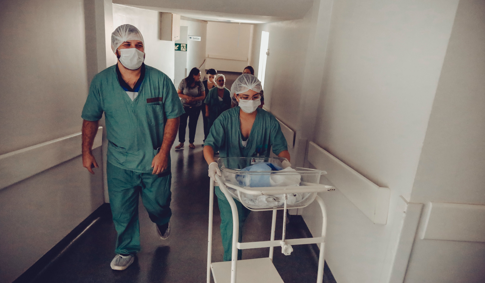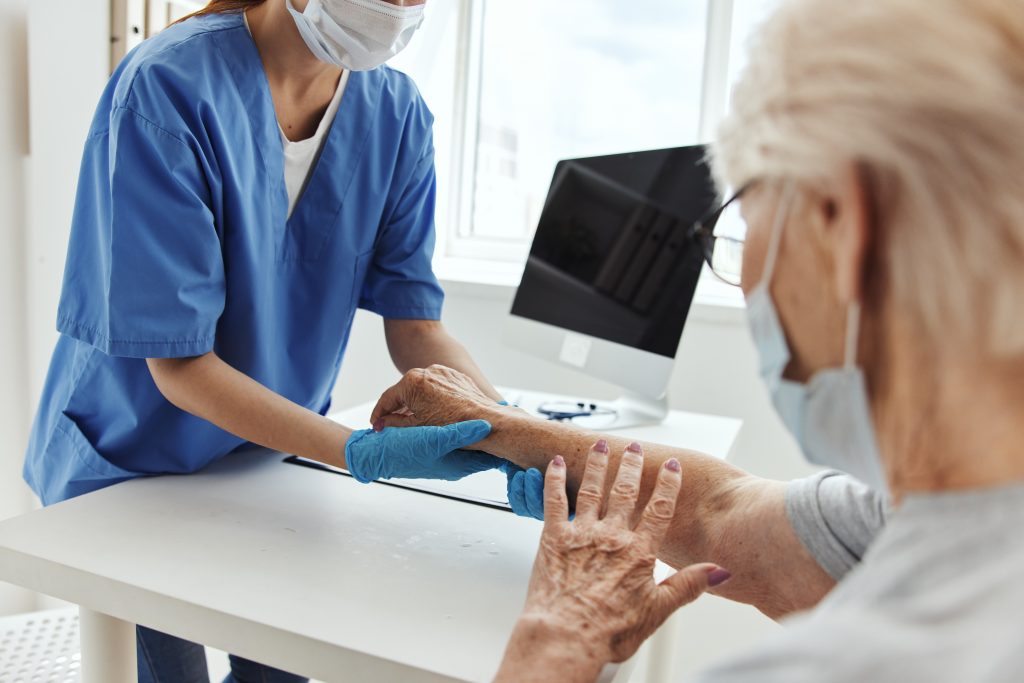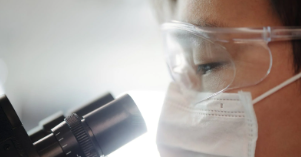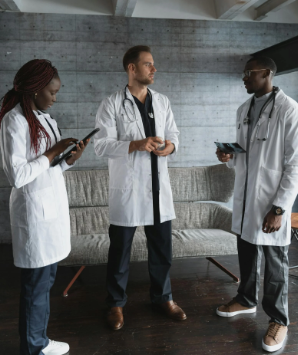Emergency Critical Communication and Connectivity in Healthcare

2-Way Radios and Conventional Wired Phones in Healthcare Communications
In the fast-paced and high-stakes world of healthcare, effective communication is essential for ensuring patient safety and providing quality care.
Traditionally, 2-way radios and wired phones have been the go-to solutions for healthcare professionals to stay connected. However, these options are now being challenged by innovative technologies that offer more efficient and reliable communication.

What’s the improvements?
With advancements in technology, new emergency communication solutions have emerged as enhancements to radios and wired phones in healthcare.
These cutting-edge systems provide seamless communication across various devices, including smartphones, tablets, and wearables, ensuring that healthcare providers can easily connect and collaborate in real time.
Why Radios and Conventional Wired Phones are outdated in Healthcare Critical Communications?
With features like instant messaging, voice calling, and video conferencing, emergency critical communication solutions enable healthcare professionals to quickly share vital information, make time-sensitive decisions, and coordinate emergency responses.
This streamlined communication not only enhances efficiency but also improves patient outcomes by reducing delays in care delivery.

Which Healthcare Sectors will need new Communication Systems?
As per the NHS report presented in the UK Parliament, digital healthcare communications were accelerated during the Covid-19 pandemic.
This highlights the importance of medical science and innovation centres to communicate more efficiently before implementing such communication systems in local hospitals.

Medical Science buildings implementing new Communication Systems
By leveraging the power of secure networks and advanced technologies, healthcare scientific organisations can improve their communication systems, boosting productivity which will result in an enhanced patient care processes in the future.
The days of relying solely on 2-way radios and conventional wired phones are numbered, as the new enhancements offer more flexibility, reliability, and connectivity, providing the healthcare industry with innovative ways to save lives.
The Importance and Application of Communication Solutions in the Healthcare Environment
Communication plays a vital role in healthcare settings, where timely information exchange can mean the difference between life and death.
Effective communication ensures that healthcare professionals can collaborate seamlessly, share critical patient data, and coordinate emergency responses. It is the backbone of efficient care delivery and patient safety.
How can 2-Ways Radios and Conventional Wired Phones limit Healthcare Communications?
Traditional communication methods often rely on outdated technology and can be awkward to use, leading to delays and miscommunication.
In emergency situations, where every second counts, these shortcomings can have serious consequences.
What are the Challenges and Consequences with traditional Communication methods in Healthcare?
A significant obstacle of traditional communication methods in healthcare is device restricted range, inability to operate during power-cuts, and incapacity to report location data.
2-way radios, for example, have a limited coverage area, which can make it difficult for healthcare professionals to communicate effectively, especially in large hospitals or rural areas. Similarly, conventional wired phones may be restricted to certain areas or may not be readily available in emergencies.
Another challenge is the lack of interoperability. Healthcare professionals often work across different departments, units, or even hospitals. In such cases, using different communication systems can delay effective collaboration and create silos of information. This can lead to delays in care delivery and compromise the important patient outcomes.
Overcoming Healthcare Industry Critical Communications Challenges
Airsys.Cloud recognises this need for innovation and presents the Group Communications as a Service (GCaaS) solution, which unifies communication across healthcare teams, offering push-to-video and many other emergency features that streamline coordination and response.
With instant global communication at the push of a button over a broadband network, healthcare professionals can stay connected in critical situations.
Why Group Communications as a Service (GCaaS) is effective in Healthcare?
Emergency critical communication and connectivity solutions like GCaaS offer a new enhancement for traditional communication methods in healthcare.
These advanced systems leverage secure networks and advanced technologies to provide seamless communication across various devices, including smartphones, tablets, and wearables. This ensures that healthcare providers can easily connect and collaborate in real-time, regardless of their location.
Benefits of Emergency Critical Communication and Connectivity in Healthcare
One of the key benefits of emergency critical communication solutions is the ability to share and track vital information instantly.
With features like instant messaging, voice calling, and video conferencing, healthcare professionals can quickly exchange critical patient data, discuss treatment plans, and make time-sensitive decisions. This streamlines communication and reduces delays in care delivery, ultimately improving patient outcomes.
Another benefit of emergency critical communication solutions is their flexibility. Unlike traditional communication methods, which are often limited to specific devices or areas, these new enhancements allow healthcare professionals to communicate using their preferred devices.
This means that Group Communications as a Service solution not only enhances convenience, but also ensures that communication is not hindered by device availability or compatibility issues. In other words, these solutions offer a seamless and reliable means of communication that is not restricted by technical limitations.

Airsys.Cloud’s GCaaS solution for emergency critical communication and connectivity
At one of the most technologically advanced bio-pharmaceutical research and innovation centers in the UK, Airsys.Cloud’s solution was implemented to replace over 90 emergency conventional wired phones and 50 two-way radios.
These devices had previously failed during power cuts, which put the personnel working inside and outside the buildings in great danger. Emergency phones lacked the ability to report locations, which should be a fundamental feature in a large medical research centre.
After thorough consultation, Airsys.Cloud installed indoor localization, long-lasting battery, and SOS buttons in the form of tablets.
Now, all the personnel in the research centre can communicate across multiple channels while being aware of their locations. Behavioural programmed triggers inform the control centre of any unusual emergency scenarios, ensuring a quick response to any potential threats.
Why Airsys.Cloud’s GCaaS solution for emergency critical communication and connectivity worked?
The implementation of such system improved communication between research staff and physicians, resulting in faster response times and improved patient satisfaction rates.
Airsys.Cloud’s successful implementation of GCaaS highlight how emergency critical communication and connectivity solutions can enhance communication in healthcare settings, leading to better patient medicine outcomes, increased efficiency, and improved collaboration among healthcare professionals.

Key features to consider when choosing an emergency critical communication and connectivity solution
When selecting an emergency critical communication and connectivity solution for a healthcare organisation, several key features should be considered.
Firstly, the system should offer secure and encrypted communication channels to protect patient and employee data and comply with privacy regulations. Additionally, it should have a user-friendly interface that is easy to navigate, even in high-stress situations.
Integration capabilities are also crucial. The chosen solution should seamlessly integrate with existing healthcare systems, nurse call systems, and alarm systems. This ensures that communication is streamlined and information is readily accessible to all relevant parties.
Furthermore, the solution should have reliable coverage and connectivity, ensuring that healthcare professionals can communicate effectively regardless of their location within the healthcare facility. Scalability is another important consideration, as the solution should be able to accommodate the growing needs of the organisation as it expands.

Training and education for healthcare professionals on emergency critical communication and connectivity
Training and education play a crucial role in maximising the benefits of emergency critical communication and connectivity solutions in healthcare. Healthcare professionals should be provided with comprehensive training on how to effectively use the system, including its various features and functionalities.
This training should be tailored to the specific roles and responsibilities of healthcare professionals, ensuring that they understand how to utilise the system in their daily workflows.
It should also cover best practices for communication, including clear and concise messaging, active listening, and effective collaboration.
Ongoing education is equally important to keep healthcare professionals updated on any changes or advancements in the emergency critical communication and connectivity solution. This can be achieved through regular workshops, webinars, or online training modules.

Conclusion: The future of communication in healthcare
The days of relying solely on 2-way radios and conventional wired phones in healthcare are numbered. Emergency critical communication and connectivity solutions offer a new enhancement that proves greater efficiency, improves patient outcomes, and revolutionizes communication in healthcare settings.
By leveraging the power of secure networks and advanced technologies, healthcare organisations can transform their communication systems and save lives. These solutions provide seamless communication across various devices, allowing healthcare professionals to connect and collaborate in real-time, regardless of their location.
As the healthcare industry continues to evolve, the adoption of emergency critical communication and connectivity solutions will become increasingly important. By embracing these innovative technologies, healthcare organisations can enhance productivity, improve patient safety, and pave the way for the future of communication in healthcare.
Find out how Airsys.Cloud can elevate your emergency critical communications and connectivity!

